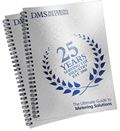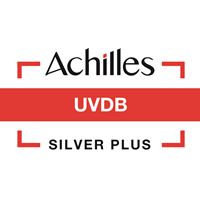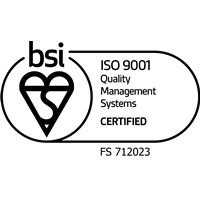Understanding Non‑Invasive (Clamp‑On) Flow Meters
In building services and industrial applications, accurate flow measurement is vital for system efficiency, energy management, and billing. Non‑invasive (clamp‑on) flow meters provide a reliable, easy‑to‑install solution that eliminates the need to cut into pipework or disrupt the system.
1. What is a Non‑Invasive Flow Meter?
Non‑invasive flow meters use ultrasonic technology, typically via transit‑time or Doppler methods, to measure the velocity of a fluid inside a pipe. Instead of being installed directly in the pipe, the sensors are clamped onto the outside of the pipe, transmitting and receiving ultrasonic signals through the pipe wall and the liquid inside.
How It Works
The meter measures the difference in time between ultrasonic pulses sent upstream and downstream. This time difference is proportional to the flow velocity, allowing the meter to calculate flow rate and total volume. Because the sensors are external, there is no interference with the fluid or system operation.
2. Key Advantages
- No system interruption: Installation can be completed without draining the system or cutting into pipework.
- No pressure loss: Since sensors are mounted externally, the flow path remains unobstructed.
- Retrofit friendly: Perfect for upgrading existing installations or temporary monitoring.
- Low maintenance: With no moving parts or fluid contact, wear and fouling are minimal.
- Versatile: Suitable for a wide range of fluids and pipe materials.
3. Limitations & Considerations
- Accuracy: May be slightly lower than inline meters, depending on installation and pipe condition.
- Pipe material and condition: Wall thickness, surface finish, and insulation can affect signal transmission.
- Environmental factors: Vibration, temperature changes, and poor coupling can influence readings.
- Flow profile: Straight pipe runs are recommended upstream and downstream for accurate results.
4. Typical Applications
Non‑invasive flow meters are widely used across many industries and building systems, including:
- Chilled‑water and heating loops for monitoring and optimisation
- Energy and water consumption tracking in retrofit projects
- Commissioning and temporary flow verification
- Industrial process monitoring where downtime is not acceptable
- Facilities management for efficiency and leak detection
5. Installation Tips
- Ensure the pipe surface is clean and smooth before attaching sensors.
- Apply appropriate acoustic coupling gel to enhance signal transmission.
- Position transducers according to manufacturer guidance (V‑method, Z‑method, or W‑method).
- Verify that sufficient straight runs are available upstream and downstream.
- Confirm correct pipe diameter and material settings in the meter configuration.
- Regularly inspect sensor alignment and gel condition for consistent performance.
6. Benefits in Building Services
Clamp‑on ultrasonic meters are particularly advantageous in modern building and energy management systems:
- Ideal for existing plant rooms and risers with limited shutdown windows.
- Enable accurate data for BMS and energy analytics integration.
- Support sustainability initiatives through better monitoring and optimisation.
- Can be redeployed or relocated as building systems evolve.
7. Why Choose DMS Metering Solutions
With over 25 years of expertise, DMS Metering Solutions supplies a range of non‑invasive flow meters designed for both permanent and portable use. Our clamp‑on meters offer flexible installation, reliable accuracy, and full technical support for integration into your smart building or industrial monitoring system.
8. Summary & Takeaways
- Non‑invasive flow meters deliver reliable measurement without system disruption.
- Perfect for retrofit and maintenance‑sensitive environments.
- Offer flexibility, low maintenance, and cost‑effective installation.
- Choosing the right meter and installation method ensures long‑term accuracy and efficiency.
- Partnering with DMS ensures expert advice, quality products, and comprehensive support.
 Training (Lunch & Learn)
Training (Lunch & Learn) CPD Training
CPD Training







































